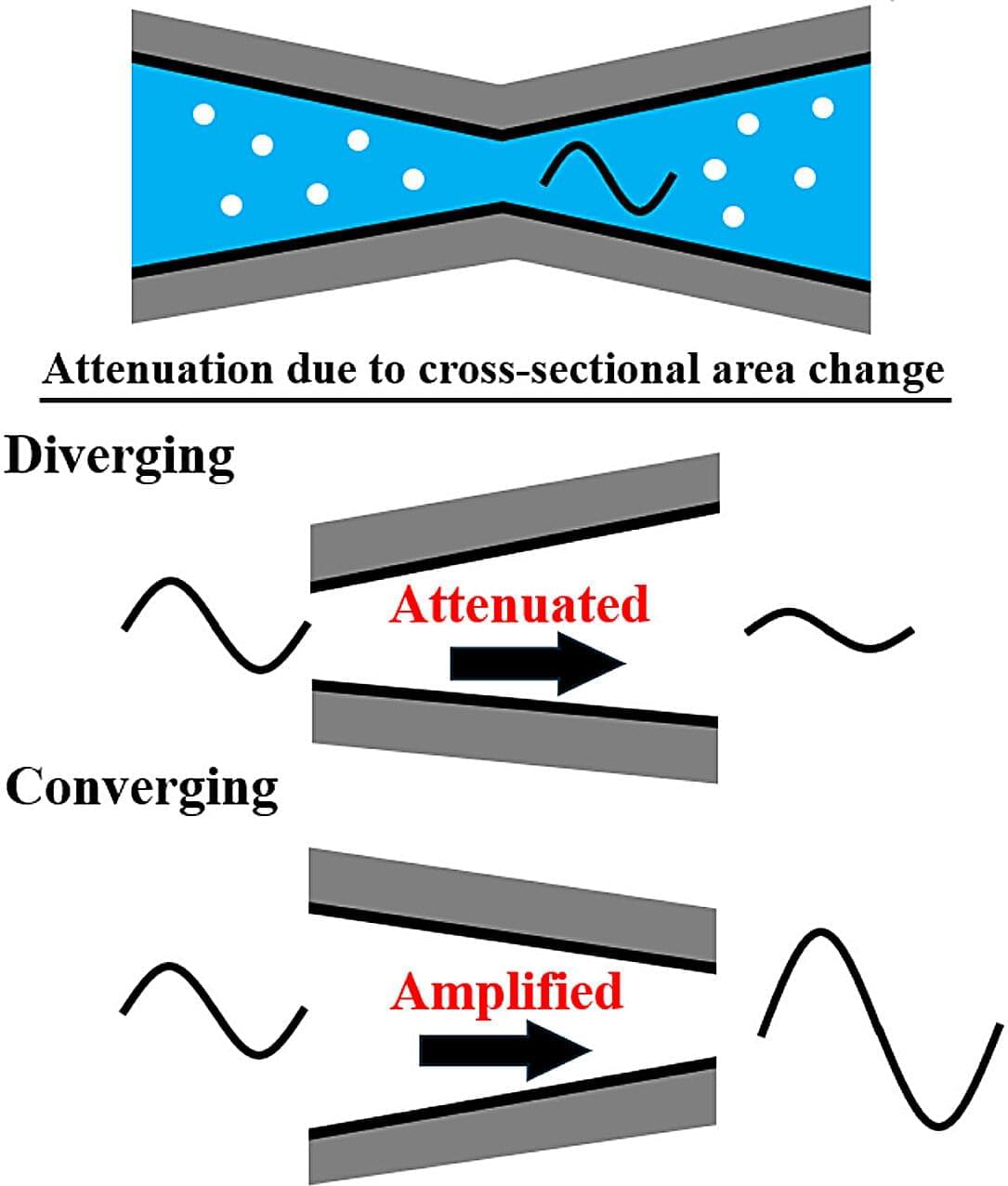Computer chips that combine the use of light and electricity are shown to increase computational performance, while reducing energy consumption, compared with conventional electronic chips. The photonic computing chips, described in two papers in Nature this week, might address the growing computing demands driven by advancing artificial intelligence technology.
Angiography is a widely used medical imaging technique that allows medical researchers and doctors to capture the vascular network (i.e., blood vessels) using contrast agents, substances that enhance the visibility of specific structures inside the body when exposed to X-rays or other imaging approaches. Conventional angiography techniques rely on contrast agents that are distributed through blood vessels, leveraging the natural flow of blood in the body.
Despite their widespread use, these approaches have significant limitations. For instance, they struggle to visualize upstream regions (i.e., regions in blood vessels that are against the direction of the blood flow) or areas that are blocked by materials (e.g., blood clots). This inability to visualize some regions limits the use of angiography for diagnosing and planning the treatment of some vascular conditions, including narrowed vessels, blood clots and abnormal connections between vessels.
Researchers at the Shenzhen Institute of Artificial Intelligence and Robotics for Society and the Chinese University of Hong Kong recently introduced a new method for exploring and reconstructing vascular networks utilizing swarms of magnetic microrobots. Their proposed approach, outlined in a paper published in Nature Machine Intelligence, enables the 3D imaging of vascular networks, including upstream regions and blocked areas.
Superconductivity—the ability of some materials to conduct electricity with no energy loss—holds immense promise for new technologies from lossless power grids to advanced quantum devices.
A publication in Physical Review Letters by researchers at the Stanford Institute for Materials and Energy Sciences (SIMES) at the Department of Energy’s SLAC National Accelerator Laboratory sheds light on an outstanding mystery in the study of superconductivity: high-temperature superconductivity in cuprates.
Doubling down on results from a previous SLAC study, the paper provides further evidence that the Hubbard model—the leading theory for describing strong correlations between electrons in quantum materials—fails to explain electron dynamics in cuprates, even in simplified, one-dimensional systems.
Rapidly increasing data traffic is placing ever greater demands on the capacity of communication systems. In an article titled “Ultra-broadband optical amplification using nonlinear integrated waveguides” published in Nature, a research team from Chalmers University of Technology, in Sweden, introduce a new amplifier that enables the transmission of 10 times more data per second than those of current fiber-optic systems.
This amplifier, which fits on a small chip, holds significant potential for various critical laser systems, including those used in medical diagnostics and treatment.
The advancement of AI technology, the growing popularity of streaming services, and the proliferation of new smart devices are among the factors driving the expected doubling of data traffic by 2030. This surge is heightening the demand for communication systems capable of managing vast amounts of information.
Pressure waves propagating through bubble-containing liquids in tubes experience considerable attenuation. Researchers at the University of Tsukuba have derived an equation describing this phenomenon, demonstrating that beyond liquid viscosity and compressibility, variations in tube cross-sectional area contribute to wave attenuation.
Their analysis reveals that the rate of change in tube cross-sectional area represents a critical parameter governing pressure wave attenuation in such systems.
Pressure waves propagating through bubble-containing liquids in tubes, known as “bubbly flow,” behave distinctly from those in single-phase liquids, necessitating precise understanding and control of their propagation processes.
Critical Gladinet CentreStack flaw CVE-2025–30406 actively exploited in March 2025 enables remote code execution.
Lovable AI scored 1.8 on VibeScamming tests, enabling full scam creation with minimal guardrails, risking mass phishing abuse.
ToddyCat exploits ESET’s CVE-2024–11859 flaw with TCESB malware, bypassing security tools via DLL hijacking.
Microsoft patched 126 vulnerabilities including actively exploited CVE-2025–29824, leaving Windows 10 users exposed.
A new multimodal tool combines a large language model with powerful graph-based AI models to efficiently find new, synthesizable molecules with desired properties, based on a user’s queries in plain language.









